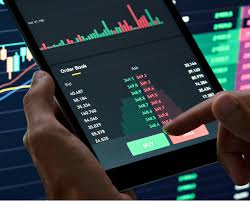Essential Crypto Trading Volume Tools for Every Trader 3

Essential Crypto Trading Volume Tools for Every Trader
In the rapidly evolving world of cryptocurrency trading, understanding volume is pivotal to making informed decisions. Volume serves as an indicator of market health and can often predict future price movements. Whether you are a novice trader or a seasoned professional, having the right tools at your disposal can significantly impact your trading strategy. In this article, we will explore various crypto trading volume tools and how they can enhance your trading experience. For more information, Crypto Trading Volume Tools visit website.
Understanding Trading Volume
Trading volume refers to the total amount of an asset that has been traded within a specific timeframe. It is a critical metric in assessing the strength of price trends and is essential for determining market liquidity. High volume often signifies increased interest and activity, while low volume can indicate a lack of interest or confidence in the asset. Volume can be measured in terms of the number of coins traded or their dollar value, and it often serves as a confirmation signal for price movements.
Why Volume Matters in Crypto Trading
In crypto trading, volume plays a crucial role for several reasons:
- Trend Confirmation: High trading volumes can confirm a price trend, while low volumes may suggest a potential reversal or false breakout.
- Market Sentiment: Volume can reflect trader sentiment, helping you to gauge the market psychology behind price movements.
- Liquidity Assessment: A high trading volume generally indicates better liquidity, allowing traders to execute their trades without significant price slippage.
Essential Crypto Trading Volume Tools
Several tools are available that can help traders analyze trading volume effectively. Here are some of the most notable ones:
1. CoinMarketCap
CoinMarketCap is one of the most popular platforms providing comprehensive data on cryptocurrency markets. It offers detailed volume information for thousands of coins and tokens, helping traders analyze historical data and current market conditions. With its user-friendly interface, traders can easily filter by volume, allowing for quick comparisons between cryptocurrencies.

2. TradingView
TradingView is an advanced charting platform that is widely used by traders. It offers robust chart analysis tools, including volume indicators. Users can customize their charts to display volume alongside price action, making it easier to identify trend strength and reversals. The community aspect of TradingView allows traders to share insights and strategies based on volume analysis.
3. CryptoCompare
CryptoCompare provides an extensive overview of cryptocurrency trading volumes across various exchanges. The platform aggregates volume data, offering a broad perspective on market activity. Traders can use CryptoCompare to track the volume of their preferred assets and identify potential investment opportunities.
4. Glassnode
Glassnode specializes in on-chain metrics and provides deep insights into market trends and behaviors. Their tools can help traders analyze trading volume alongside on-chain data, providing a more comprehensive understanding of market dynamics. Glassnode is particularly helpful for those looking to take a data-driven approach to trading.
5. CoinGecko
CoinGecko is a well-known cryptocurrency data aggregator that provides real-time market data. Users can access detailed information about trading volumes across various exchanges, enhancing their analysis when making trading decisions. CoinGecko also allows traders to compare assets based on their trading volume metrics.
Interpreting Volume Indicators
In addition to using the above tools, understanding how to interpret volume indicators is critical for effective trading. Common volume indicators include:
- Volume Moving Average: This indicator smooths price volume over a specific period, helping to identify trends and distinguish between normal trading activity and anomalies.
- Accumulation/Distribution Line: This study assesses the relationship between price and volume to determine whether asset accumulation or distribution is occurring in the market.
- On-Balance Volume (OBV): OBV uses volume flow to predict changes in price. It correlates volume and price direction to assess buying and selling pressure.

Common Volume Trading Strategies
Knowledge of volume can empower traders to develop effective trading strategies. Here are some common strategies that incorporate volume analysis:
1. Volume Breakouts
One common strategy involves looking for volume spikes that accompany price breakouts. Sudden increases in volume often signify strong buying interest, and traders can enter long positions when the price breaks above resistance levels on high volume.
2. Divergence Analysis
Traders often watch for divergences between price movements and volume. For example, if the price is making new highs but volume is declining, it may indicate weakening momentum and a potential reversal.
3. Volume Profile Trading
Volume profile analysis allows traders to view volume at specific price levels instead of just over time. This information can help identify support and resistance zones, providing entry and exit points based on historical trading activity.
Conclusion
In conclusion, understanding and utilizing crypto trading volume tools is essential for making informed trading decisions. By leveraging these tools and indicators, traders can better assess market trends, gauge sentiment, and ultimately improve their trading strategies. As the cryptocurrency market continues to grow and evolve, those who harness the power of volume analysis will likely have an advantage in navigating its complexities. Remember, while trading volume is a valuable tool, it should be used in conjunction with other analytical methods and risk management strategies to optimize results.
